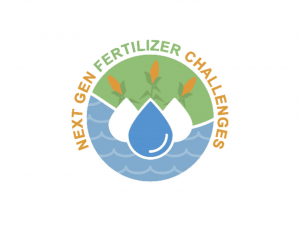
Arlington, Va., Oct. 18, 2021 – Today, The Fertilizer Institute (TFI) announced the organizations and products selected under the Next Gen Fertilizer Challenges, a partnership with the Environmental Protection Agency (EPA) and the U.S. Department of Agriculture (USDA). Collectively, the challenges aim to accelerate the development of innovative fertilizer product technologies and to increase the use of existing enhanced efficiency fertilizers (EEFS) that maintain or increase crop yields and reduce environmental impacts to air, land, and water.
“Innovation has been the hallmark of the fertilizer industry, leading us to the modern industry that helps feed the world,” said Corey Rosenbusch, TFI President and CEO. “Enhanced efficiency fertilizers and other new technologies play a big role in our ability to do this efficiently and sustainably, and I am excited to see what the future holds for the winners of this challenge.”
The organizations selected today are part of the second component of the Next Gen Fertilizer Innovation Challenge, which identifies novel pre-market technologies for fertilizers that can reduce the environmental effects from modern agriculture while maintaining or increasing crop yields.
Fertilizers facilitate the growth of crops at yields that provide sustained global food production. However, nitrogen and phosphorus fertilizers applied without consideration of the principles of 4R Nutrient Stewardship (source, rate, time, and place) can have harmful economic, environmental, and social effects. EEFs and other new product technologies and formulations control fertilizer release or alter reactions to increase nutrient uptake by the plant and reduce nutrient losses to the environment. These technologies can be an important addition to a conservation practice system that helps reduce row crop agriculture impacts on the environment, while maintaining or increasing agricultural productivity and profitability.
Winners include:
Tier 1 solutions ($17,500 prize):
- Dr. Christopher Hendrickson, Aqua-Yield Operations LLC, Draper, Utah, for a nano-smart fertilizer.
- Taylor Pursell, Pursell Agri-Tech, Sylacauga, Ala., for “Urea 2.0,” which replaces the conventional urea core with a customizable mixture of materials to provide fertilizers tailored to local needs.
Tier 2 solutions ($10,000 prize):
- Dr. Kuide Qin, Verdesian Life Sciences, Cary, N.C., for using innovative mixture technologies to improve performance of industry-standard nitrapyrin for longer effectiveness, less nitrate leaching, and prevention of farm equipment corrosion.
- Dr. Catherine Roue, Fertinagro Biotech International, Portage, Mich., for “Phosphate Liberation Booster” technology, which uses secretions from phosphate-starved plants to boost plant uptake so less fertilizer may be added, and legacy phosphorus can be accessed.
- Chandrika Varadachari, Agtec Innovations Inc., Los Altos, Calif., for “Smart-N,” which is a smart-fertilizer that releases nutrients on-demand by the crop, and which creates a chemical “cage” for urea that dissolves into plant nutrients.
Tier 3 solutions (Honorable mention):
- Dr. Jaroslav Nisler, the Institute of Experimental Botany, The Czech Academy of Sciences, Czech Republic, for using derivatives of the plant growth hormone MTU, which helps create longer growth periods, protection from stress, larger plants, and potentially less nutrient loss per unit of fertilizer applied.
- Dr. Leanne Gilbertson, Civil and Environmental Engineering Department at the University of Pittsburgh Pittsburgh, Penn., for creating a “protected fertilizer package,” which can carry nutrients through soil pores to the area around the plant roots.
- Dr. Robert Neidermyer, Holganix LLC, Aston, Penn., for “Bio 800 ,” a microbial inoculant that harnesses the power of over 800 species of soil microbes, kelp, and other soil amending ingredients to promote greater crop production and plant health.
- Paul Mullins, Brandon Products Ltd., Ireland, for “BBS-1,” a biostimulant derived from seaweed extract that is applied as a fertilizer coating to improve nitrogen-uptake in root cells.
The first part of the challenge, “EEFs: Environmental and Agronomic Challenge,” identified existing EEFs currently on or near-market that meet or exceed certain environmental and agro-economic criteria. Those products were announced in March 2021 and are currently undergoing greenhouse trials at the International Fertilizer Development Center.
EPA and USDA are working in collaboration with TFI, the International Fertilizer Development Center (IFDC), The Nature Conservancy (TNC), and the National Corn Growers Association (NCGA). The challenges were developed with input from stakeholders such as corn grower representatives, fertilizer companies, university researchers, and environmental and industry NGOs.
#
The Fertilizer Institute (TFI) is the leading voice of the nation’s fertilizer industry. Tracing its roots back to 1883, TFI’s membership includes fertilizer producers, wholesalers, retailers and trading firms. TFI’s full-time staff, based in Washington, D.C., serves its members through legislative, educational, technical, economic information and public communication programs. Find more information about TFI online at TFI.org. Learn more about TFI’s nutrient stewardship initiatives at nutrientstewardship.org.



